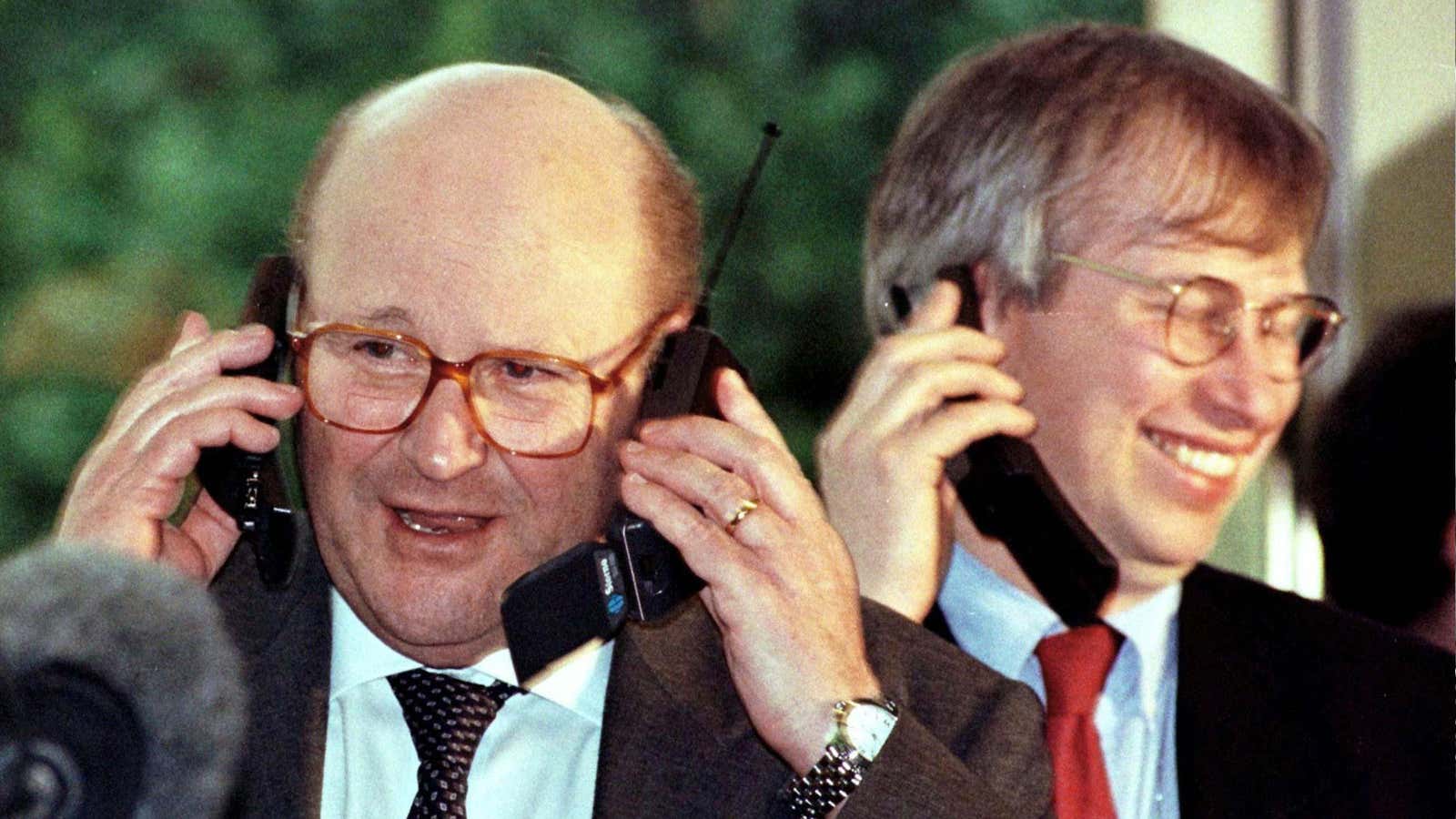One of the most valuable natural resources is invisible and all around you: The electromagnetic spectrum that carries radio, television, and the internet to users without wires.
How can governments allocate these airwaves for the maximum benefit to the public? Assigning spectrum to the wrong user could mean denying the public the benefits of these services. Underpricing access to spectrum is effectively a corporate giveaway, while overpricing it slows innovation and could lead to higher costs for consumers.
Economist Evan Kwerel spent his career at the Federal Communications Commission trying to solve the problem of spectrum allocation, and did so thanks to some ground-breaking economic research and the debut of mobile phones. Since then, spectrum auctions have contributed more than $200 billion to the US Treasury, and now Kwerel is a finalist for the prestigious Paul A. Volcker public service award.
How to share the air
In the early days of government spectrum allocation, the process for divvying up frequencies was essentially administrative, with the FCC holding hearings to assign licenses. It wasn’t opaque, and could make for bad behavior, like former US president Lyndon B. Johnson using his power as a lawmaker to build a television and radio empire.
But as broadcasting grew to dominate mass media, it became clear that the government wasn’t getting the best deal for the public when assigning spectrum. An economist would tell you that there is a solution to a price discovery problem: Have an auction. And indeed, last year’s Nobel prize for economics was awarded to Robert Wilson and Paul Milgrom, who developed the theory behind the complex auctions required to distribute electromagnetic real estate.
But theory must be implemented, and that’s where Even Kwerel comes in. Kwerel’s an economist, too, who has worked at the FCC since 1983. In 1993 he was scrambling to apply Wilson and Milgram’s insights to auction off public airwaves that would be used for mobile phones.
Even then, spectrum auctions weren’t a new idea—another Nobel economist, Ronald Coase, had proposed it in a 1959 paper, but the telecom industry was opposed because it correctly foresaw that auctions would force them to pay higher prices. When president Bill Clinton took office, fretting over the deficit, his administration saw a spectrum auction as a way to raise funds for the government.
“Cell phones made the spectrum so much more valuable that someone paid serious attention to it and now they were willing to anger the broadcast industry,” Kwerel explained to Quartz last year.
Meet the simultaneous multiple-bid auction
The specific technical challenge is in the nature of mobile phone deployment, with bubbles of use area around cell towers, which when depicted on maps reminded observers of microscopic pictures of biological cells. The value of a license to operate in each cell was dependent on who received the license in nearby cells, which made it difficult for bidders who sought a contiguous territory to make the right offers.
A standard auction design might result in bidders paying more for licenses than they would actually be worth. Instead, Kwerel, drawing on Milgrom and Wilson’s work, came up with a simultaneous multiple-bid auction, which did not end until there were no more bids for any license. That allowed bidders to gain more information and work out prices for the packages of licenses that they wanted without suffering the “winner’s curse” of overpaying for a license.
Those early auctions raised more than $10 billion, proving out a method that would be used, with various modifications, in dozens of auctions to follow. And that’s just in the US: Other countries have adopted these sophisticated auction designs for spectrum sales, and similar problems like allocating fishery rights.
The new methods also depended on more widespread computing technology that allowed the government and bidders to track multiple simultaneous bids on hundreds of different licenses. Milgrom, summoned to the FCC in 1993 to discuss the auction design, brought a floppy disk with an Excel spreadsheet demonstrating the mechanics of the process to Washington. Kwerel says that advances in computing have made increasingly sophisticated auctions possible, but in 1994 his team was prepared to do the whole thing by hand.
“Since everything was developed so quickly, there was concern whether the electronics would work. And so we he had a complete paper back-up,” he says.
